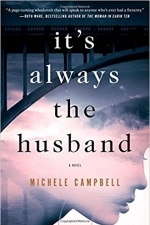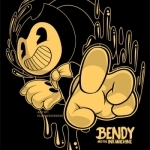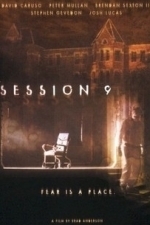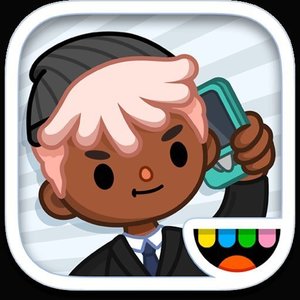
Toca Life: Office
Entertainment and Games
App Watch
Ever wonder what grown-ups really do at work all day? In Toca Life: Office, you get to tell stories...
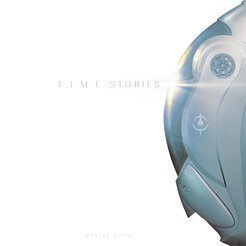
T.I.M.E Stories
Tabletop Game
The T.I.M.E Agency protects humanity by preventing temporal faults and paradoxes from threatening...
Kristy H (1252 KP) rated It's Always the Husband in Books
Jan 21, 2018 (Updated Jan 21, 2018)
Be forewarned: this is a book populated by annoying, pathetic, self-involved characters. While it supposedly centers on a friendship that begins in college, that couldn't really be further from the truth. These three girls are not friends. The centerpiece is wealthy Kate Eastman, a daughter from a privileged family, who somehow attracts everyone into her orbit, despite being a real narcissistic jerk. Frankly, it's hard to read a book when you really don't care about anyone. This is exacerbated by some stilted and forced writing--backed up by cliches--that makes the novel hard to read at times.
I was amazed by Kate's power over everyone and frustrated by their devotion to her. We are probably supposed to feel sorry for her, due to her hateful family and deceased mother, and for the other characters and the power the Eastmans exert over them. But I just couldn't -- at least not continuously throughout the novel. In fact, it's impossible to root for either side, or anyone, in this book.
Now, the second half of the novel switches over to the present day and allows a bit more focus on a mystery. You're left guessing and there is at least less spotlight on the girls and their pettiness (though it's definitely still there). Unfortunately, I thought the second-half mystery was somewhat spoiled (not to spoil anything myself) by a main player in the puzzle plot who carried a ridiculous and biased torch for Kate, despite having spent a sum total of about three hours in her presence. That one plot point irked me so much that I enjoyed the second half of the novel less than I would have otherwise. And the second half is better: I read it straight through in an evening, and it kept me turning the pages, wondering how things would turn out.
Unfortunately, it was marred by the earlier half of the book, a cast of despicable characters, and some cliched writing that left a lot to be desired. Still, I have to hand it to Campbell: she kept me reading in spite of all of that. Because of that, I'm going with 3 stars: a combination of 2.5 for the first half of the novel and 3.5 for second.
I received a copy of this novel from the publisher and Netgalley (thank you!) in return for an unbiased review.
Louise (64 KP) rated The Unseeing in Books
Jul 2, 2018
The year is 1837 and Sarah Gale is sentenced to be hung, she is believed to have aid and abet James Greenacre in the death of Hannah Brown. Sarah Gale was having an on/off relationship with Greenacre and living with him in his home until he met Hannah. Hannah Brown was a spinster with a bit of money and business’s in her possession,until her body parts were found randomly around London.Greenacre a conniving man that he is only wanted Hannah for her money and threw Sarah out a few days before Christmas. A few days after Christmas Hannah Brown is gone and Sarah Gale is back in Greenacre’s bed. Sarah is adamant that she knows nothing about the disappearance or death of Hannah Brown, but no-one believes her.
Sarah Gale and a Women’s institute have requested Sarah to be pardoned as she is to be hung but is adamant she knows nothing. Edmund Fleetwood has been assigned the case, his job is to see if she will talk or if there is any new evidence. This is one of the most spoken about cases of the time and this could be the career break that Edmund needs, however Sarah Gale is still adamant that she knows nothing. Can this meek, pale women really be involved in a murder?
This book was amazing, I felt like I had been transported to London in 1837. The writing was so atmospheric, the descriptions of the sounds, the streets and the way the characters spoke just blew me away, and it was consistent throughout the book. The Unseeing is a slow burn book that drip feeds you information slowly and you start piecing it together like a jigsaw puzzle. I was definitely hooked and needed to know how Hannah had come to be in pieces around London and what was going to happen to Sarah. There is a twist and I didn’t see it coming whatsoever and was left shocked for some time.
This book is based on a true crime that happened in 1837 and is known as the Edgeware Murder. Sarah Gale and John Greenacre are the names of the actual people involved and the court scripts can be seen at the Old Bailey website. You can definitely tell that the Mazzola had knowledge of the justice system as it was very well researched. I loved that Mazzola managed to make a fictional book out of a true crime and it makes it even more intriguing to read. It does make you think of how the justice system failed a lot of people back in Victorian times.
I will definitely be reading anything else Anna Mazzola release and recommend this book you are interested true crime and historical fiction.
I rated this 4 out of 5 stars
Gareth von Kallenbach (980 KP) rated Bendy and the Ink Machine in Video Games
Aug 14, 2019
Similar to other games with an episodic structure (e.g.: Alan Wake and Life is Strange), BatIM uses short levels to advance the story line in some intriguing ways. Love of Exploration will be your saving grace in this game, as each area requires some in order to advance to the next. The game is not fast-paced. On the contrary, it’s meant to be a slow experience for the player with sparse combat scenarios present only to add a brief moment of action. Your actions as Henry are very limited, as is his speed. With 5 chapters, the gameplay time is at just about hours, and the game uses every minute to pull you deeper into the dark world it has created.
I reviewed BatIM for the Nintendo Switch and found that the game was somewhat held back by the platform’s technical limitations. The biggest drawback I found was that textures would often blur and have jagged edges, with the shaky 30FPS frame rate just feeding fuel to this fire. This is a detriment to gaming’s purpose in keeping the players immersed in the environment. BatIM is meant to be tense, but I often found myself dispelled of the illusion due to blurry visuals and dropped frames. With a game designed so well, how unfortunate that this be its biggest flaw. Maybe this can be patched out, but we can only hope at this point.
BatIM developer, theMeatly Games, may have taken inspiration from Five Nights at Freddy’s as the gameplay and overall genre of the games are quite similar. The world is conceptualized using objects such as books and tapes found within the game instead of long cut scenes that can tend to take you out of the moment rather than add to it in games like these. As you delve deeper into the oubliette of a workshop, you’ll find that the gameplay is perfectly paired with the game’s sick and twisted visuals, proving that BatIM delivers on every level.
Bendy and the Ink Machine is available now on all major platforms.
Chris Sawin (602 KP) rated Session 9 (2001) in Movies
Jun 22, 2019
The atmosphere in this film is just brilliant. The setting puts you on edge to begin with since it takes place in an abandoned mental hospital, but even deserted there's just something about the building that doesn't seem right. It's like something has infected the structure down to its core. The setting seems to rely heavily on luminescence or the lack thereof. Even when a room in the hospital is illuminated, it still feels dark. Darkness still overwhelms it like it's hiding something. In addition to that, there's the Mary Hobbes subplot that makes the film that much more disturbing. But the less you know about that going into the film, the better.
While the film has a fantastic atmosphere, it seems to be lacking something to make it a superb film. Everything seems to be there as the script is good, the writing is top notch, can't complain about the acting, there's a bit of a twist in the ending that's really well done, and the film stays with you long after you watch it. The best explanation is that it had all the elements of a superb film, but it dropped the ball slightly in its execution. The pieces of the puzzle weren't put together in exactly the right way, but were put together in a way that still resulted in a good psychological horror film.
Session 9 is the perfect horror film for people who like films that mess with their head. It gets beneath your skin and stays there. While the film is practically a cult classic and contains all the elements of a great horror film, it seems to be lacking something. The best way to explain it is to say Session 9 is a superb psychological horror film that just wasn't as good to this reviewer as it is to others, but that could always change with repeat viewings of the film.
Chris Sawin (602 KP) rated Catfish (2010) in Movies
Jun 22, 2019 (Updated Jun 23, 2019)
If somebody made me choose a favorite film genre, psychological thriller would quite possibly be my answer. Films that include incredible twist endings (Oldboy) or have elaborate storylines that make you think (Inception) are definitely some of the best times to be had when it comes to an entertaining movie experience. Catfish was marketed as a film that was not only a thriller, but also contained "a shattering conclusion" that was compared to Alfred Hitchcock. In the end, it didn't really have either of those things.
Catfish had this vibe the entire film like it was leading towards something dark near its conclusion. As Nev makes his way to Michigan, you get more and more anxious as he nears his destination. Even the music gets really unsettling. Is Megan's family going to be a bunch of chainsaw wielding cannibals or have Angela and Vince been keeping a kidnapped girl named Megan chained in their basement for weeks to lead young, single guys out there for them to torture as some sort of twisted way to get off? No, it's nothing like that. Catfish never really became thrilling or even came near diving into dark territory.
What Catfish winds up being is an interesting character study presented as a documentary. The film's heart resides in who Megan really is and how the entire experience affects Nev. Once the pieces of the puzzle are put together and everything falls into place, Catfish turns out to be a very raw, emotional, and heartfelt film. What's intriguing is the film revolves around Facebook and with The Social Network hitting theaters in about two weeks, it seems like a bit of a bold move.
What is arguably the best scene in the film is when it's actually explained why Catfish was chosen as the title in the final minutes. It is a pretty incredible explanation and fits the film perfectly.
Catfish isn't necessarily a bad film, in fact, it's pretty powerful once it really gets going. It probably isn't what you're expecting though. While Catfish is laugh out loud at certain points in the film, at its core, it's a documented love story that mostly resides on the internet. Maybe it just comes from personal experience, the way the film was presented, or the on-screen presence of the characters in the film, but Catfish felt genuine which isn't something that can be said about many films that have come out in 2010.
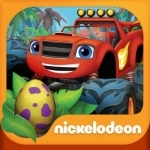
Blaze and the Monster Machines Dinosaur Rescue HD
Education and Games
App
Get ready to rescue baby dinosaurs with Blaze and AJ in Blaze’s Dinosaur Egg Rescue Game for iPad!...

Digimon Heroes!
Games, Entertainment and Stickers
App
Collect and Battle Your Ultimate Digimon Heroes! Digimon Heroes is an exciting free-to-play Card...

Playkids Party - Fun Games for Children
Games and Education
App
Let's get this party started! Join Junior and friends on this amazing collection of fun and...
